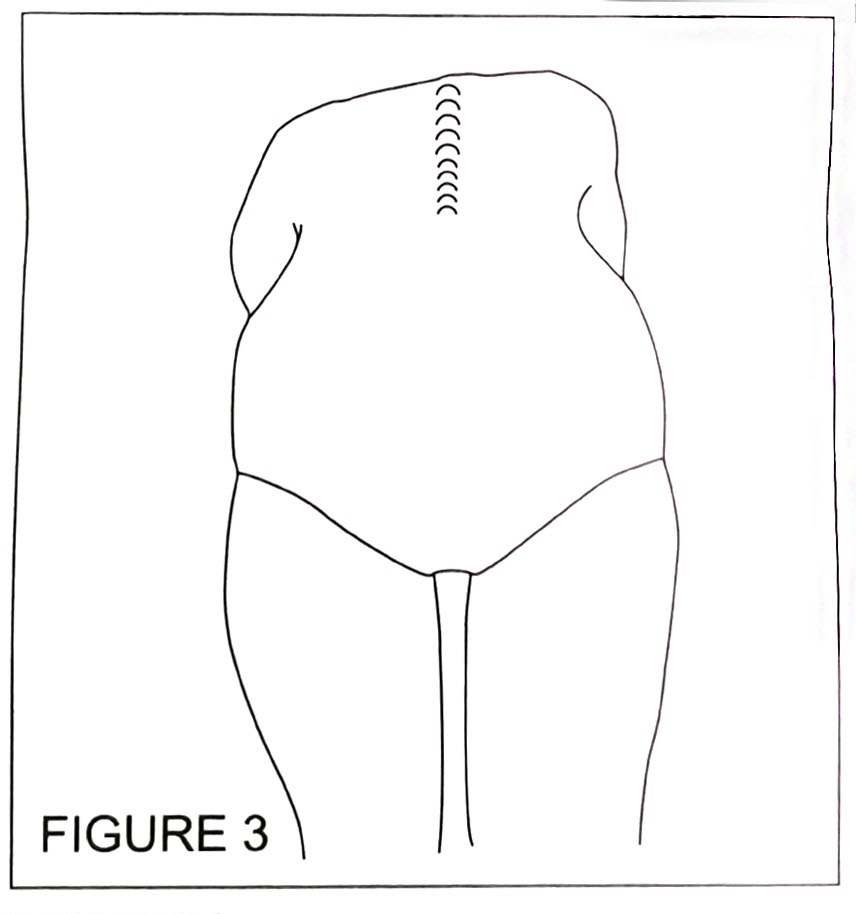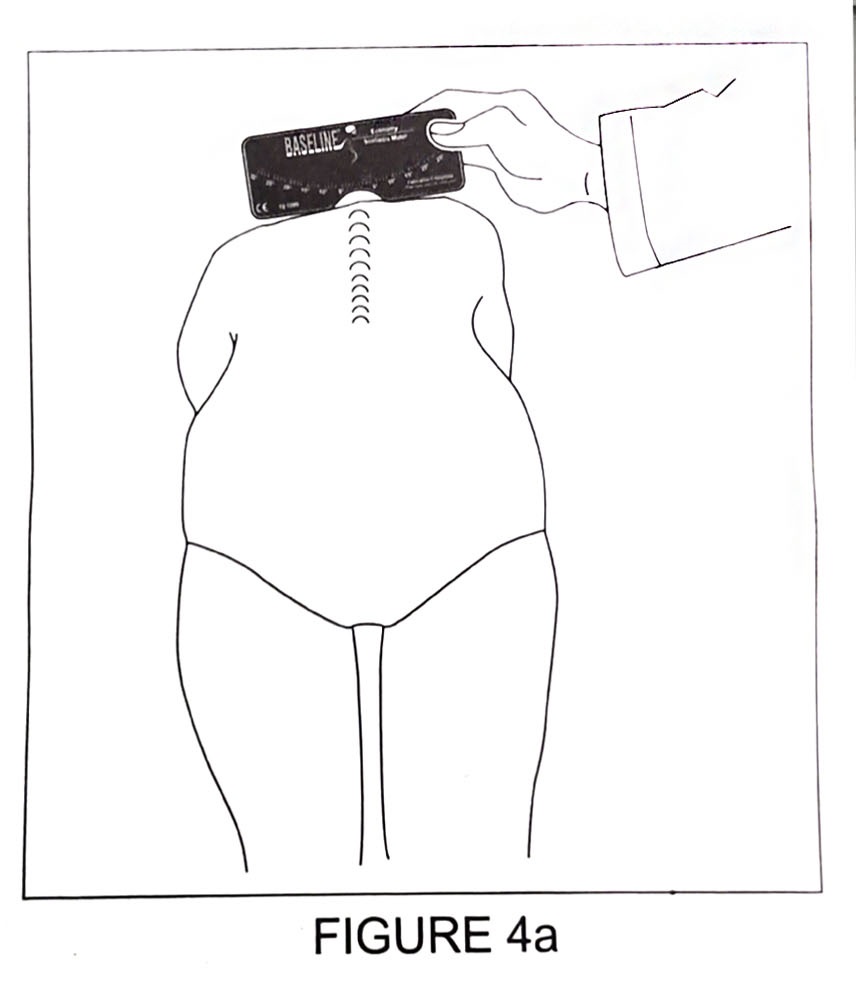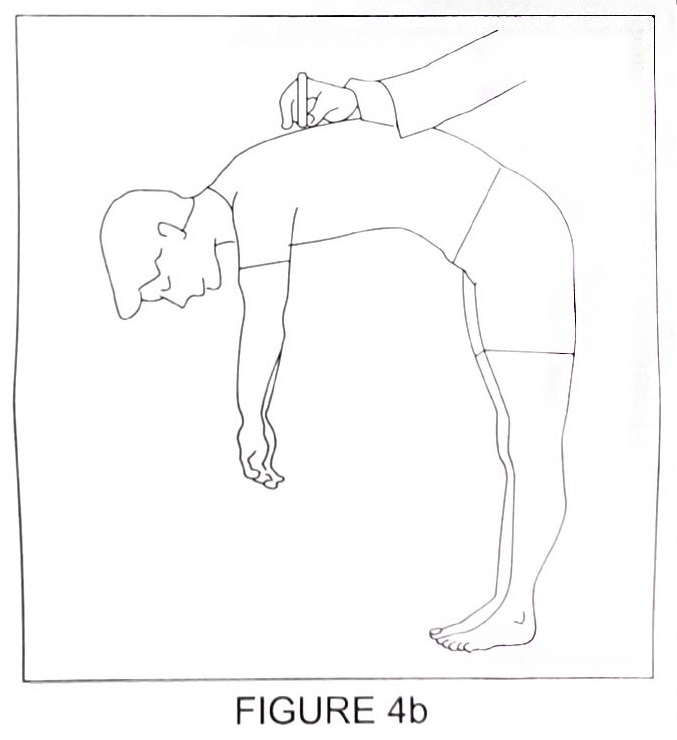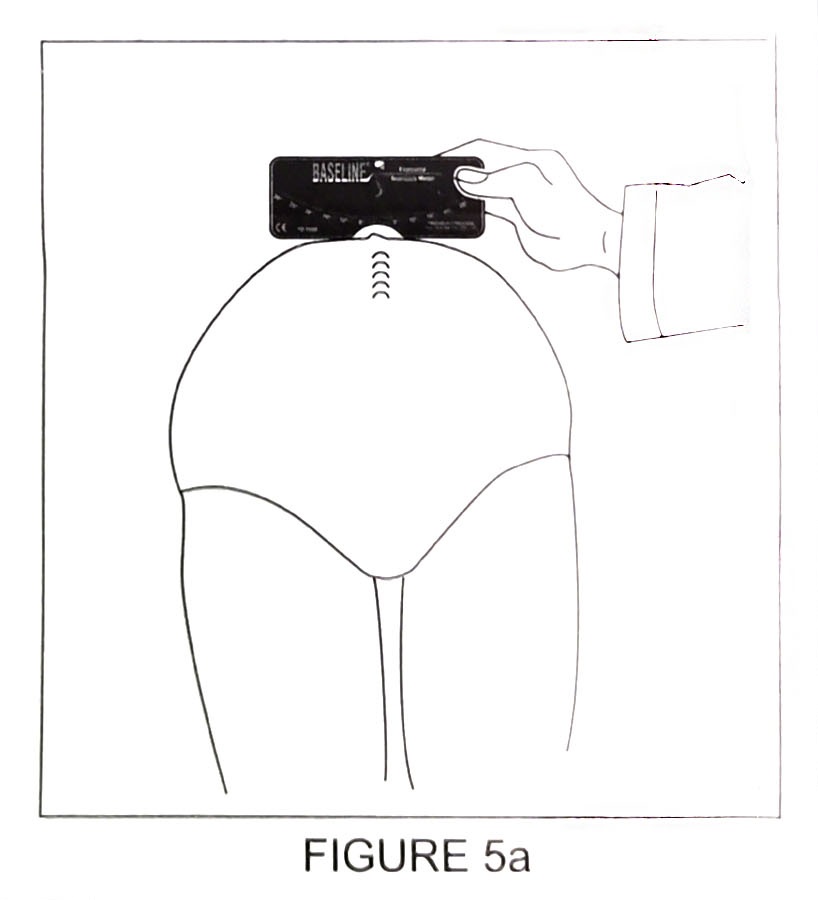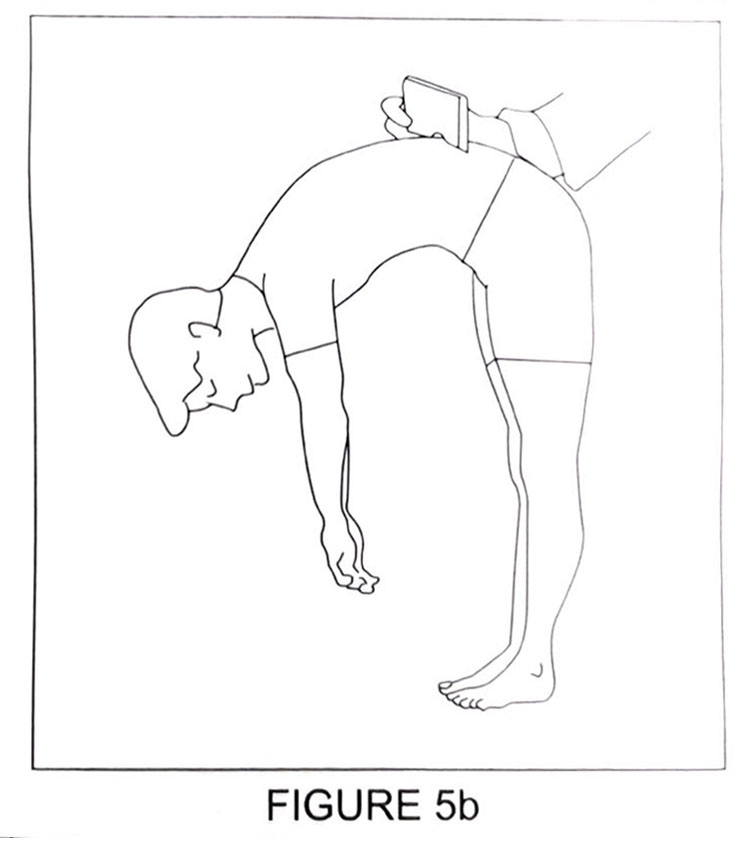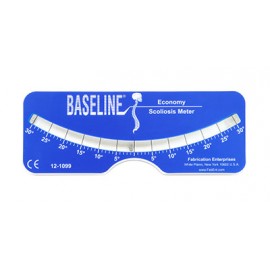Guidelines for Use in Spinal Screening Programs
Baseline Plastic Scoliosis Meter Scoliometer
Guidelines for Use in Spinal Screening Programs
During routine spinal examinations, use the Baseline Scoliosis Meter to measure the degree of rotation of a deformity of the back. This information can be used as a guideline in deciding who should be referred for further medical evaluation.
Use guidelines provided by the Scoliosis Research Society and many state Departments of Health and/or Education to perform screening for spinal deformity. This book is NOT intended to be a description of how to perform spinal screen-ing. IF a deformity of the spine is noted, the Baseline Scoliosis Meter should be used as described in this manual.
1. The person should stand straight; view him/her from behind. (SeeFigure 1)
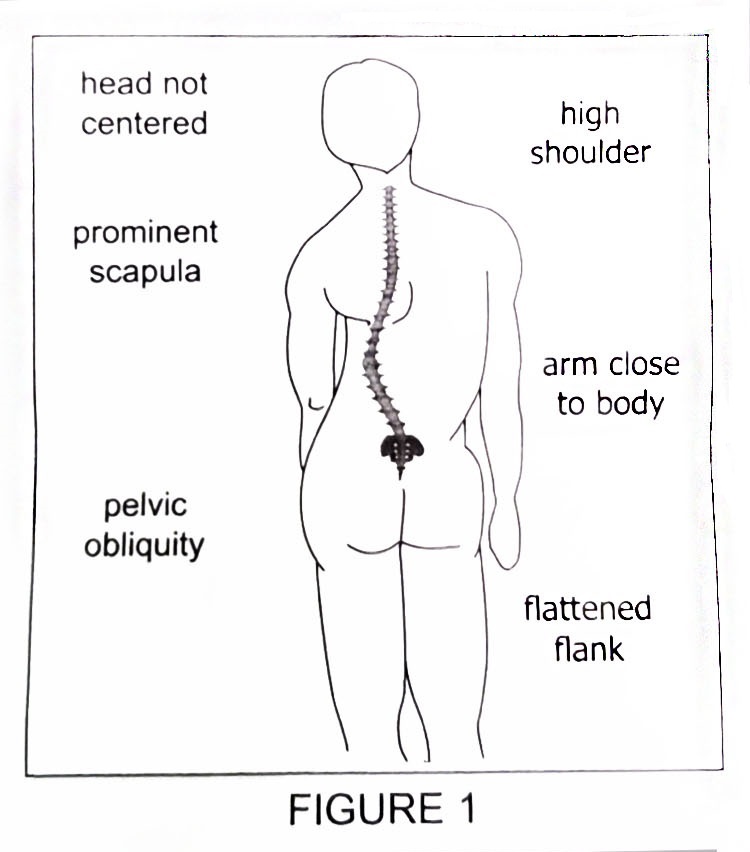
2. Ask the person to extend his armsforward and place hands togetherwith palms flat against each other (See Figure 2)
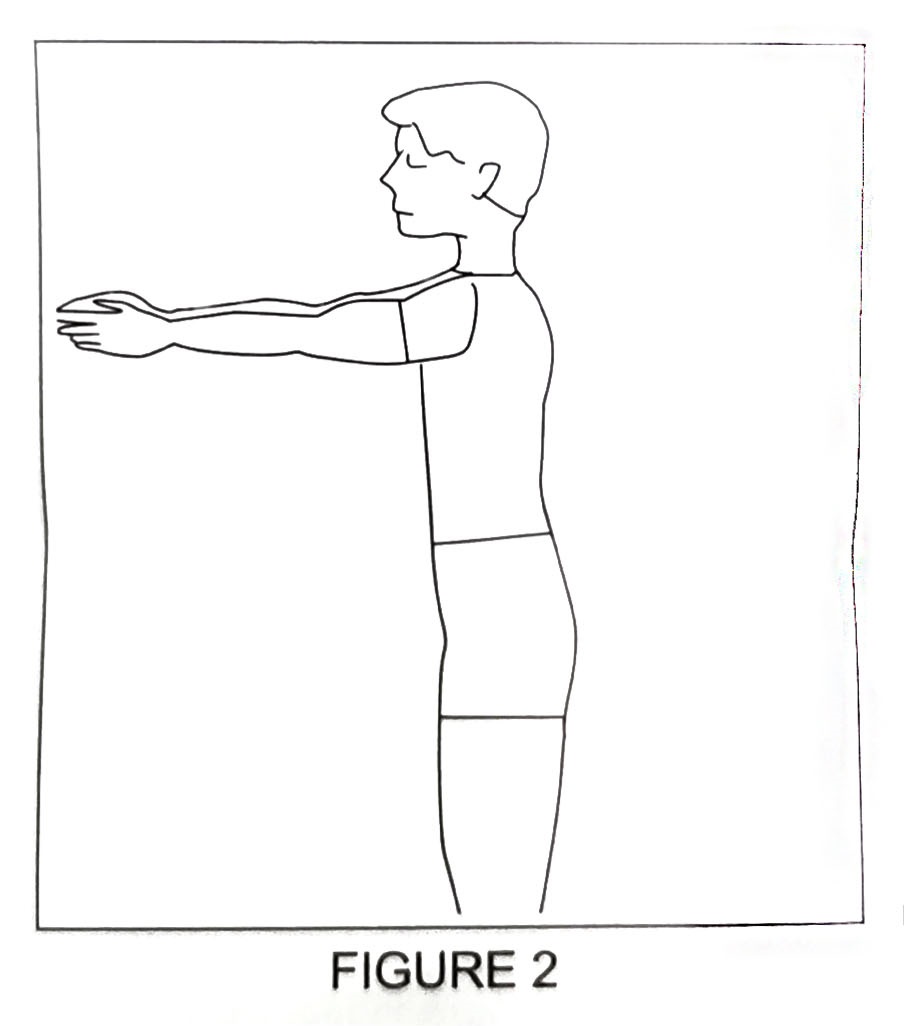
3. Ask the person to bend forward slowly. When the shoulders are level with the hips, stop. Look at the patient from the front and back. Your eyes should be at the same level as the back for best evaluation. Note any rib elevation and/or asymmetry in the lower back.(See Figure 3)
4. Adjust the person's bending position to the level where the deformity of the spine is most pronounced, noting that everyone will be different. For example, a curve low in the lumbar spine will require that the person bend further forward than the one which is present in the thoracic or upper spine.
5. Place the Baseline Scoliosis Meter across the deformity at right angles to the body, with the "0" marked over the top of the spinous process (See Figures 4a and 4b). Do not push down. Let the Baseline Scoliosis Meter rest gently on the skin. Read the number of degrees of rotation.
6. NOTE: If there is asymmetry in both the upper and lower back, two (2) Sco-liosis Meter readings will be necessary. The curves will almost always go in opposite directions with the one in the thoracic spine usually to the right and the other in the lumbar spine usually to the left. (See Figures 5a and 5b)
7. lf the reading on the Scoliosis Meter is 7 degrees or more at any level of the spine,the screening examination is considered positive.Further medical evaluation is necessary for people in this category. Lesser degrees of rotation may or may not indicate a mild degree of scoliosis. Immediate referral is not necessary; however, in such cases re-screening is recommended within three to six months.
8. Record findings on the Spinal Screening Program Form which is available from the Scoliosis Research Society.
9. A change of 3 degrees of more of a measurement indicates possible curve pro-gression. A change of 2 degrees or less usually indicates only minor variationin posture. It should be noted that in some patients, curve progression may occasionally occur without a change in the clinical measurement.


